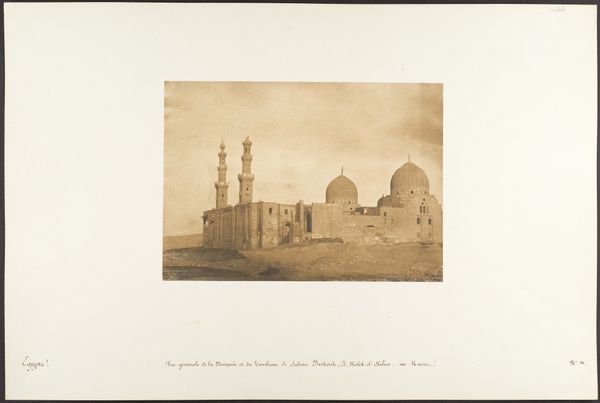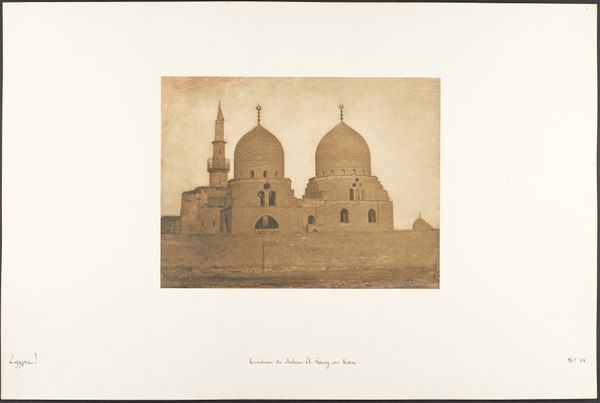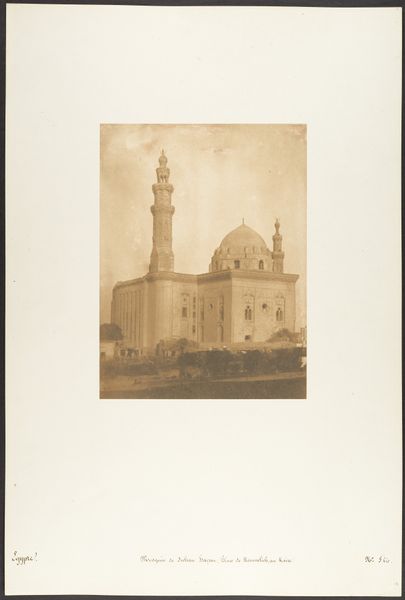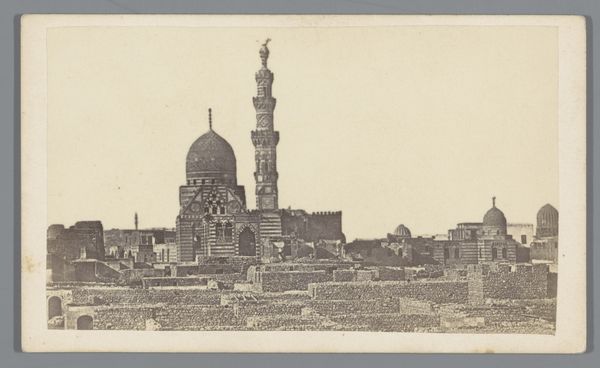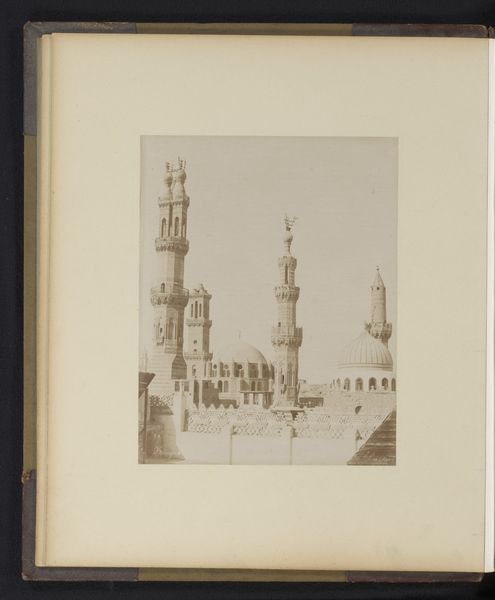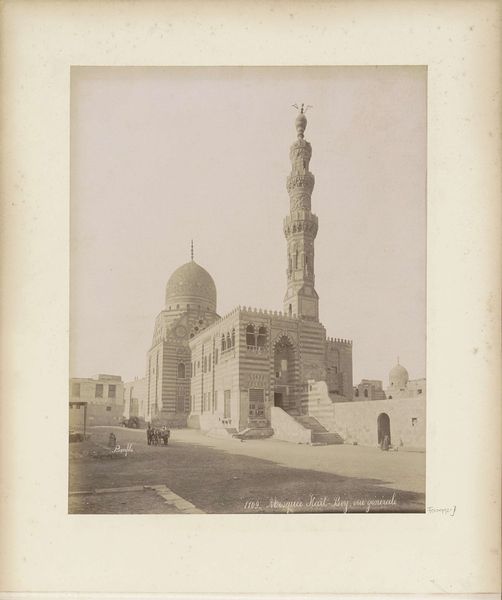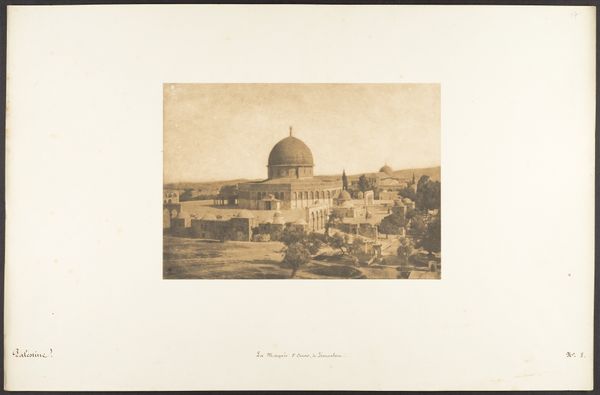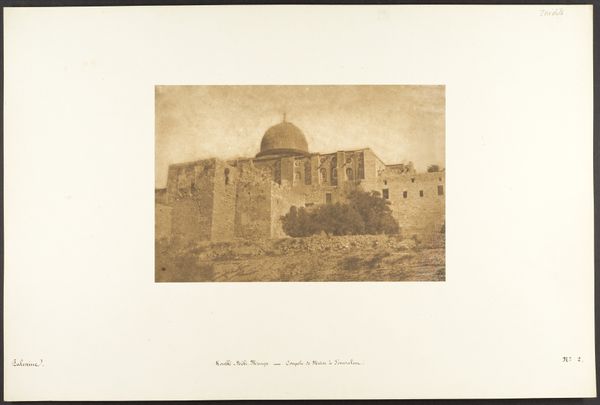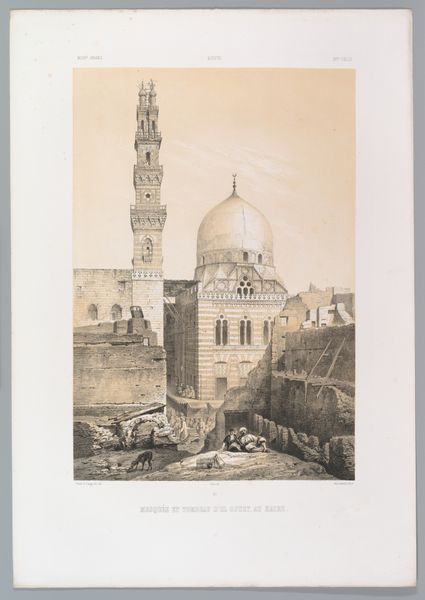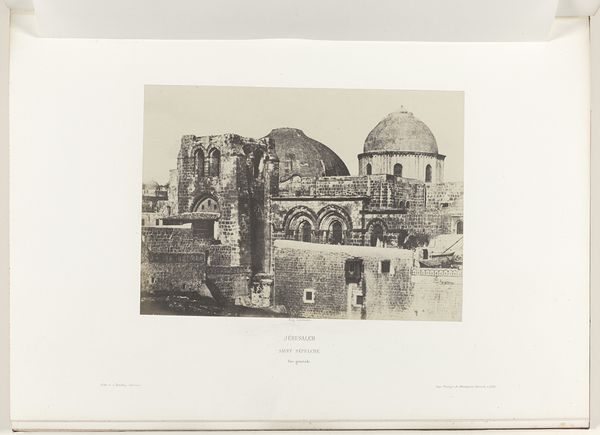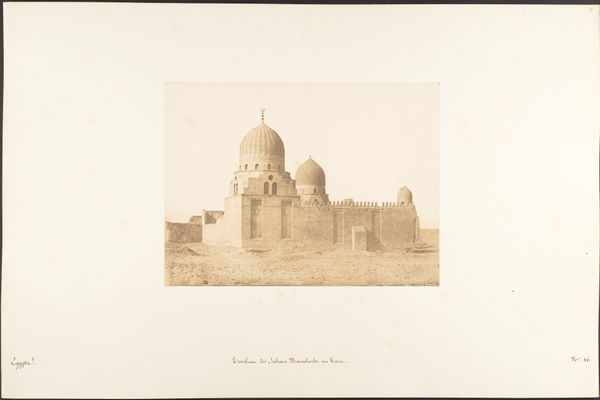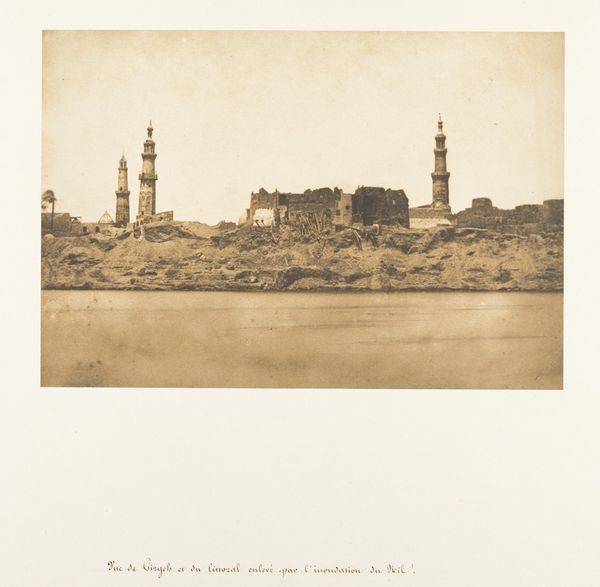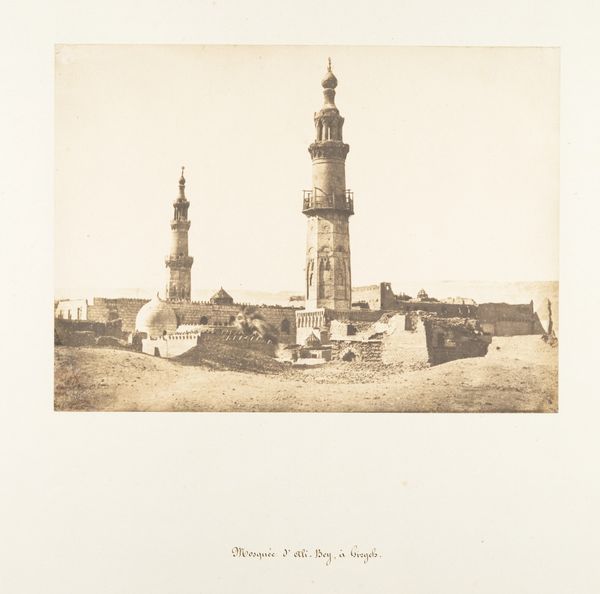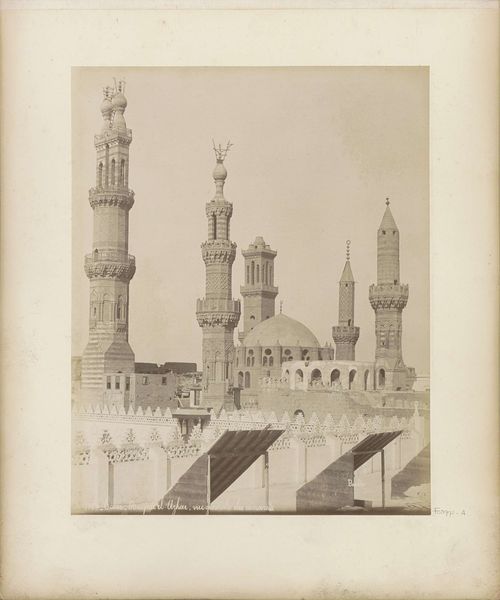
photography, gelatin-silver-print, architecture
#
landscape
#
photography
#
gelatin-silver-print
#
islamic-art
#
architecture
Dimensions: Image: 6 in. × 8 9/16 in. (15.3 × 21.8 cm) Mount: 12 5/16 × 18 11/16 in. (31.2 × 47.5 cm)
Copyright: Public Domain
This is Maxime Du Camp's photograph of the Tombeau du Sultan Kaït-Bay, in Cairo. It was made in the mid-nineteenth century, using the Calotype process. Du Camp was part of a wave of European artists and scholars who traveled to Egypt, then under French influence. Photography offered a seemingly objective way to document the region's ancient monuments and contemporary life. This image presents the Sultan's tomb as an object of historical and architectural interest, but it's also important to understand that the tomb was a religious site, central to the city's cultural identity. The photograph emphasizes its physical structure, a decision that reflects the Western fascination with archaeological discovery and the emerging field of Egyptology, and the social dynamics of colonial exploration. To understand this photograph fully, we need to consult not only art historical sources, but also historical accounts of French involvement in Egypt, studies of architectural history, and post-colonial theory. The meaning of art is always tied to its context.
Comments
No comments
Be the first to comment and join the conversation on the ultimate creative platform.
